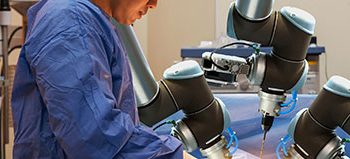The global 3D cell culture market is projected to reach USD 1,720.3 Million by 2022 from USD 682.8 Million in 2017, at a CAGR of 20.3%. Factors such as rising focus on developing alternative methods for animal testing, funding initiatives from government and private investors, technological advancements and product launches, and growing awareness are driving the growth of the market.
The global market, by applications, is segmented into cancer and stem cell research, drug discovery and toxicology testing, and tissue engineering & regenerative medicine. The cancer and stem cell research segment is estimated to account for the largest market share in 2017. Growth of this application segment is attributed to increasing incidence of cancer and significant funding initiatives for cancer research from government as well as private organizations.
Based on end users, the 3D cell culture market is segmented into pharmaceutical & biotechnology companies and research institutes. In 2017, pharmaceutical and biotechnology companies are expected to form the largest end-user segment. The presence of a large number of pharmaceutical and biotechnology companies, increasing R&D spending in these companies, and growing focus on alternative testing models instead of animal techniques are the key drivers for this end-user segment.
Download Free Brochure: https://tinyurl.com/ydyw7zx4
Based on product, the market is segmented into scaffold-based 3D cell culture, scaffold-free 3D cell culture, microfluidics-based 3D cell culture, and magnetic levitation and 3D bioprinting. The scaffold-based 3D cell culture products segment is expected to account for the largest market share in 2017, and is projected to register the highest CAGR during the forecast period. The high growth in this segment is attributed to the ability of scaffold-based products to mimic in vivo conditions, thus driving their adoption among end users.
By type, the scaffold-based 3D cell culture market is segmented into hydrogels/ECM analogs, solid scaffolds, and micropatterned surfaces. The hydrogels/ECM segment analogs are expected to account for the largest share of the scaffold-based market owing to their wide acceptance among researchers.
The market is dominated by North America, followed by Europe, Asia Pacific, and the Rest of the World (RoW). The dominance of the North American market is attributed to factors such as increase in incidence of cancer, presence of well-established pharmaceutical and biotechnology industry, and availability of technologically advanced products.


